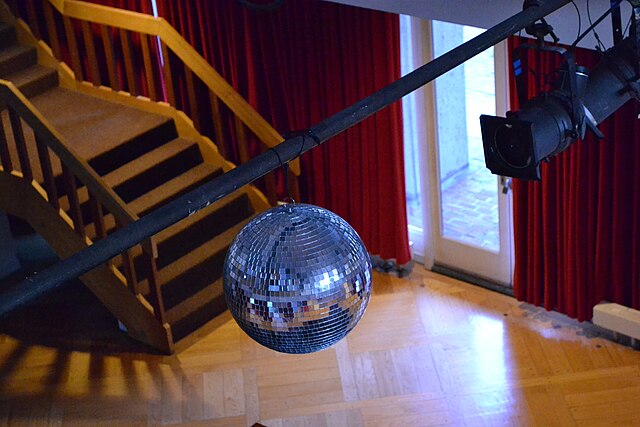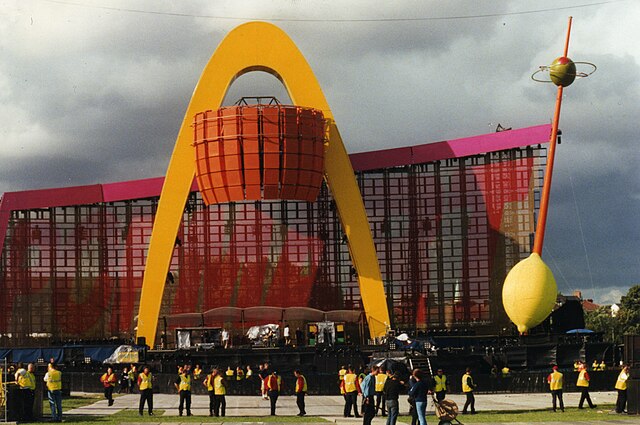A disco ball is a roughly spherical object that reflects light directed at it in many directions, producing a complex display. Its surface consists of hundreds or thousands of facets, nearly all of approximately the same shape and size, and each has a mirrored surface. Usually, it is mounted well above the heads of the people present, suspended from a device that causes it to rotate steadily on a vertical axis, and illuminated by spotlights, so that stationary viewers experience beams of light flashing over them, and see myriad spots of light spinning around the walls of the room.
A mirrored disco ball
A disco ball and spotlight in the Fishbowl of Currier House.
A mirrored ball can be seen above the bandstand in this 1919 photo of the Louisiana Five jazz band.
The PopMart Tour was a worldwide concert tour by rock band U2. Staged in support of the group's 1997 album Pop, the tour's concerts were performed in stadiums and parks in 1997 and 1998. Much like the band's previous Zoo TV Tour, PopMart was an elaborate production. Its lavish stage design had a 165-foot-wide (50 m) LED screen, a 100-foot-high (30 m) golden arch, and a large mirror-ball lemon. As with the Zoo TV Tour, the band delivered an image and performance that were ironic and self-mocking on PopMart, deviating from their earnest performances of the 1980s; the band performed in costumes that, along with the stage design, poked fun at the themes of consumerism and pop culture.
PopMart Tour
The mirrorball lemon that U2 emerged from for encores. The prop occasionally malfunctioned, trapping the band inside.
The stage during the performance at Botanic Gardens, Belfast, on August 26, 1997.
Mothers of disappeared detainees join U2 on stage during a performance at Estadio Nacional, Santiago, Chile, on February 11, 1998.







